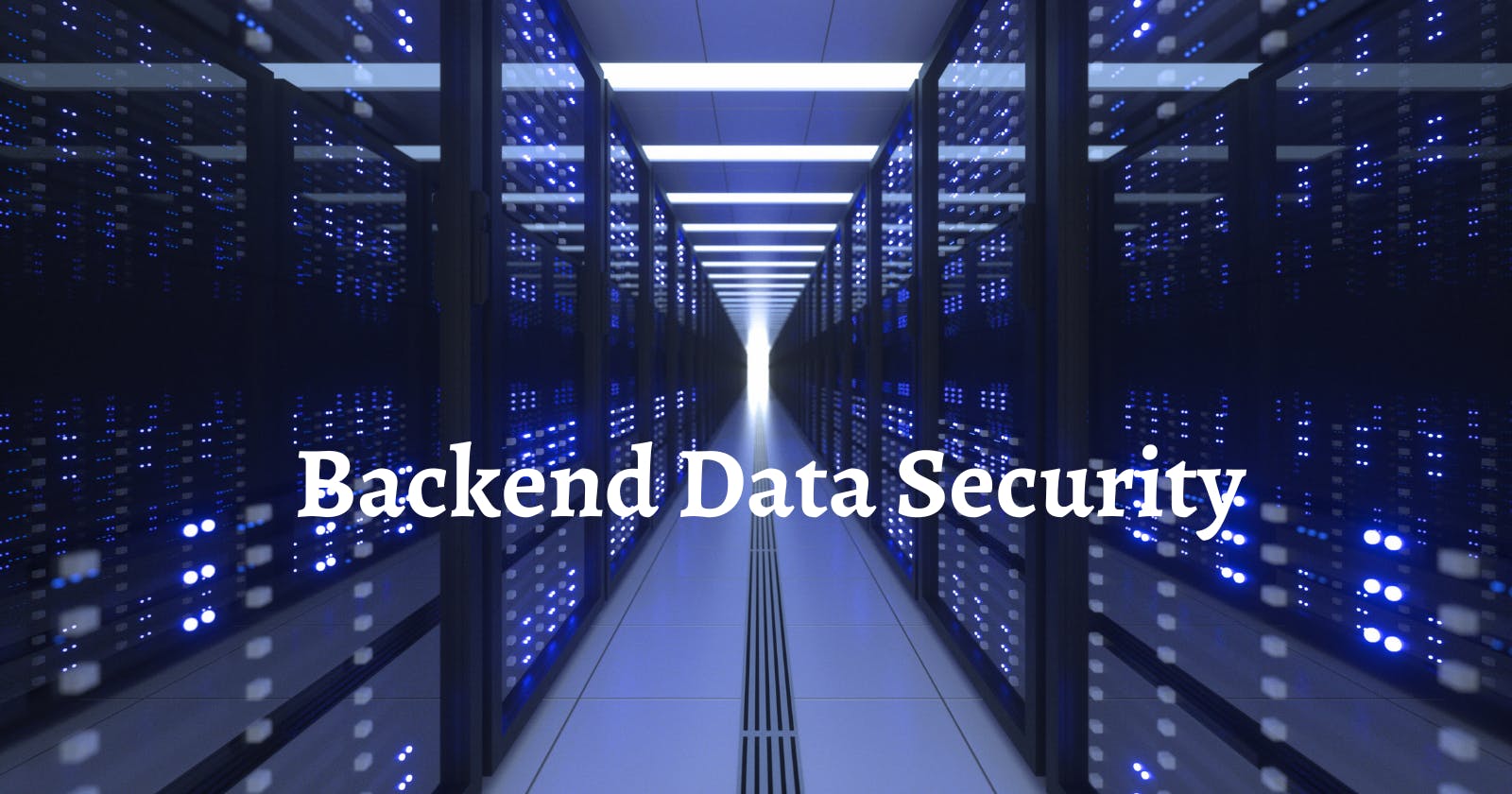What is Data security?
Data security refers to the collective measures used to protect and secure a data or database management software from illegitimate use, corruption, unauthorized access, malicious threats, and attacks. Data security management helps to protect digital information from security attacks that could lead to data breaches. There are different types of security attacks and the most common ones occur in the form of SQL injection, buffer overflow, denial of service(DOS) attacks, password attack, malware, phishing, and cross-site scripting attack. SQL Injection attack is a technique that attackers use to gain unauthorized access to data by inserting malicious code into a database program.
Denial-of-Service (DOS) attack attempts to render machines, devices, and network resources unusable for intended users. This could cause a server or network to delay in responding to users' requests.
A malware attack is when malicious software is installed into a system without the person's content. The purpose of this malware is to steal information and control the victim's system.
Password attack: Passwords are the most common method of authenticating users to gain access to information and this makes them a juicy target for attackers. Access to a user's password can be gained by using different methods including a Brute-force attack which means using combinations of information to guess the password or the dictionary attack which is when the attacker guesses different common passwords.
Why is Backend Data Security important?
In July 2015, Ashley Madison which is a social networking service had its security breached by a group of hackers called the Impact Team. This attack affected 32 million users and sensitive information such as credit card details, email addresses, and residential addresses were exposed. The impact team claimed that the breach was easy to execute because Ashley Madison's security was terrible.
In April 2020 during the height of the pandemic when Zoom was getting a lot of signups, their security was breached, and 500,000 users were affected by this attack. Notable companies such as Facebook, LinkedIn, Yahoo, and Twitter have also been vulnerable to a security breach exposing the data of millions of users. This proves that no one is immune to these security attacks.
The importance of backend data security cannot be over-emphasized as the occurrence of these large-scale data breaches shows that backend data security is very vital as it helps to prevent security attacks and also protect users' data from getting into the wrong hands. Without a good backend framework and security, the data of your organization is at great risk.
There are different motives behind every data breach and this ranges from hackers wanting to steal the identities of users, breaking into your systems so that they can store data and host applications on your infrastructure, instead of paying for their own, or just to prove that they simply can. Some attackers just want to ridicule an organization's security practices, especially if it is reputable.
A lot of research has shown that most reported attacks occur in the backend and this certainly highlights the importance of backend security. Utilizing the best security practices can help to avoid the most risks associated with data breaches.
Best practices for backend data security
Now that we know the importance of securing data, let's take a look at the different measures that can be taken to ensure effective data management. Attackers will stop at nothing to gain access to data that they need and the only way to be safe is to implement the best security practices by using these measures:
Encryption
Encryption is a means of securing data or information by encoding it in a way that can only be accessed and read by those with the correct decryption key. Encryption aims to ensure that the information or data is only accessed by the person that it is intended for and the receiver can also verify the source of the data.
Data encryption ensures data is protected from unauthorized access by rendering it unreadable even in the event of theft.
Access Control
Access control is a data security measure that is used to regulate access to data or information in an organization. Access control protects data from a wide variety of threats which include unauthorized access, unapproved alteration of data, and lack of data privacy.
Regular Data Backup
Data backup is a process of duplicating or archiving data to a secondary location to allow retrieval of the duplicate set after a data loss event. There are different methods of backing up data this includes using external hard drives, hardware appliances, backup software, and cloud backup services.
Using security software
Security software is a program that is designed to protect and secure data from unauthorized access, intrusions, viruses, and other threats. Security software can help defend users and organizations from a wide range of risks. There are various types of security software programs and the most commonly used ones include:
- Anti-malware software
- Anti-spyware
- Firewall software
- Anti-virus Software
- Network security software
- Pop-up blockers
Data Erasure
Data erasure is a software-based approach for securely overwriting data from any data storage medium with zeroes and ones across all sectors, then validating and confirming the erasure. The data on the storage device is rendered unrecoverable by truncating it.
Masking sensitive data
Data masking is a technique for producing a synthetic copy of your organization's data that looks realistic. When genuine data is not required, such as during user training, sales demos, or software testing, the objective is to secure sensitive data while offering a useful substitute.
Data masking alters sensitive data so that it is useless to unauthorized intruders while remaining usable by software or authorized personnel.
Adopt multifactor Authentication
Authentication is the process of verifying the identity of a user or process. Using multi-factor authentication is considered very effective as this will make it harder for attackers to gain access to user data because they will have to provide two or more other means of verification.
Backend frameworks used for data security
The backend is the part of a computer system or application that cannot be accessed by a user. This part is responsible for storing and manipulating data. Different frameworks have been developed for high-performance with highly secured features. Although these frameworks might not provide 100% data security needed, they may have some relevant protocols in place.
These backend frameworks include:
Python
Django
Laravel
ASP.NET core
Ruby on Rails
Flask
Fiber
How these security practices have changed over the years
Over the years, there has been a lot of awareness about data security. More organizations are taking the best practices to ensure the safety of data. Likewise, most data management practices have evolved due to the emergence of new software tools and frameworks.
As a result of the internet revolution, not only are personal computers and laptops considered vulnerable, but also printers, routers, and other hardware are now designed to withstand hacks and cyberattacks. Earlier, we would run our antivirus or antimalware programs on our PC regularly to check for infections and vulnerabilities, but today these programs work continuously in the background while browsing the internet and checking every website that we visit for safety in real-time.
Wireless Internet networks and connections have made cyber attacks more difficult to detect compared to traditional cabled hardwired internet, so cyberattacks have risen dramatically over the past few years. Encryption technologies like WPA2 and higher enable the protection of wireless Hardware and related Software systems.
Backing-up practices are also widely adopted as most professionals make use of various RAID setups as it provides higher data security and improves availability and performance by placing the data on multiple disks
Wrapping Up
The issue of data breaches will always persist because hackers are not relenting in their efforts but what you can do as a backend developer is to take all the necessary precautions and follow the best data management practices to keep your data safe. Losing data can cost organizations money, time, and effort and this should be avoided by all means.

